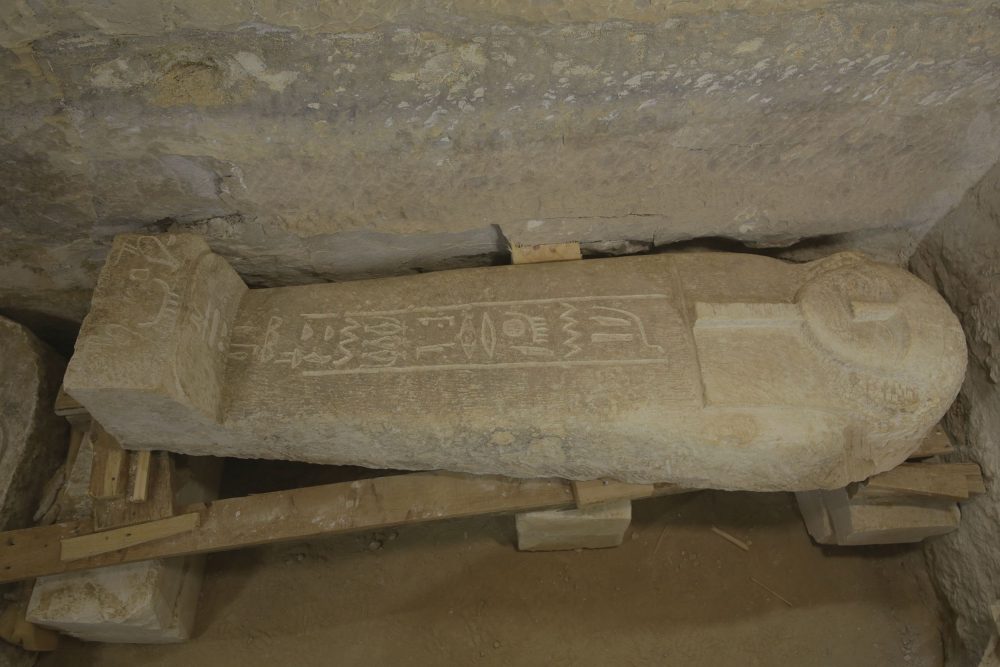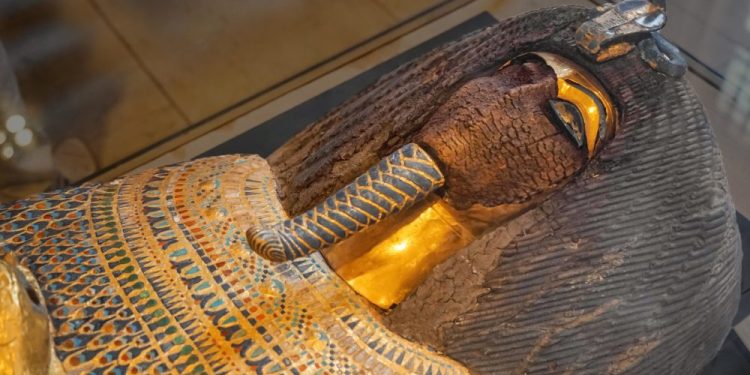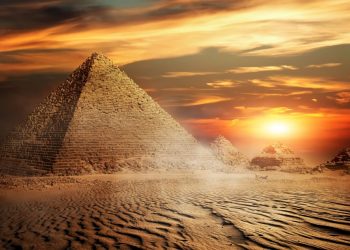An archaeological mission in Saqqara has discovered a strange mummy buried with six instead of four Canopic jars and reference to a serpent Goddess.
Saqqara is home to countless mysteries that have helped us better understand ancient Egyptian history. Not only is it home to the first Egyptian pyramid, a vast underground world beneath the pyramid, a pyramid complex 2.5 times the size of an Old Kingdom Settlement, and the underground chambers where the mythological Apis Bulls (the Serapeum) were buried, but Saqqara is also home to some of the most interesting tombs in Egypt.
An archeological mission that has spent more than four years excavating tombs at Saqqara has revealed another striking Saqqarean mystery.
Back in 2018, an Egyptian-German archaeological mission headed by the Ministry of Tourism and Antiquities and Eberhard Karls University of Tübingen discovered the great Mummification Workshop Complex of ancient Egypt’s 26th Dynasty (664-525 B.C.). Inside it, the experts discovered five burial chambers.
The mummification house or per-nefer, aka the House of Beauty / House of Purification, as the ancient Egyptians called it, was only discovered after experts managed to remove more than 42 tons of rubble that covered the structure.
The discovery was somewhat unique, as it was the first time that a per-nefer of similar size and preservation was found in Egypt. Most of what we know about mummification workshops comes from ancient sources.
Now, after a year of excavation and research, archaeologists have found a sixth burial chamber at the bottom of the communal cemetery, some thirty meters deep, cut into the bedrock. It was hidden behind a large stone wall built 2,600 years ago, and it held four wooden sarcophagi in very poor condition.
Dr. Ramadan Badri Hussein, the head of the excavation, has pointed out that one of the coffins belonged to a priestess named Didibastet. She was buried with six Canopic jars instead of four, which does not correspond to the funerary practices that we thought were a fact to this date.

Each of the Canopic jars was placed inside the tomb and is where the ancient Egyptians placed the lungs, stomach, intestines, and liver of the deceased once they were embalmed to be protected by the gods known as the Four Sons of Horus. Each of them, Kebehsenuf, Imset, Duamutef, and Hapise, was assigned a specific organ, whose figure was reflected in the corresponding vases. But Didibastet‘s mummy had six, and not four Canopic vases, which is confusing.
The additional two vases have been analyzed by computed tomography, and preliminary analysis of the images indicates that both contain human tissue. The researchers think that Didibastet received a special form of mummification and was allowed to preserve six organs and not four. To understand this, further analysis of the Canopic vases will take place.
So far, archaeologists have not found any other comparable cases of the embalming process. In fact, many of the individuals that appeared in the community funerary well of the mummification complex were buried with a single vase, made of clay and not alabaster. Obviously, they were cases of much less wealthy clients than Didibastet, Dr. Hussein explained.
A Serpent Goddess, in addition to a strange mummy?
Archaeologists have also studied the texts inscribed on coffins and sarcophagi inside the burial chambers. They have identified the bodies of priests and priestesses of a mysterious serpent goddess, known as Niut-shaes. What experts have found so far tells us that they were all buried together and that Niut-shaes would have been an important deity in the XXVI dynasty. In fact, they do not rule out the existence of a temple dedicated to her somewhere in the Memphite area.
The discovery of the workshop in Saqqara is of great importance because it helps us to understand better the mummification process in ancient Egypt and how the mummies were prepared for the final burial.
The jewel of the discovery of 2018 was a gold-plated silver funeral mask that covered the face of a priestess of the snake goddess Niut-shaes, who was buried there along with other more priestesses. Analysis of this object has shown that the silver used in the crafting process of the mast has a purity of 99.07, which is a very high value for such an ancient artifact.











